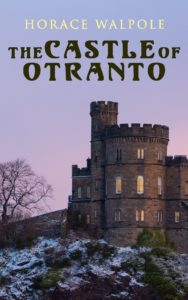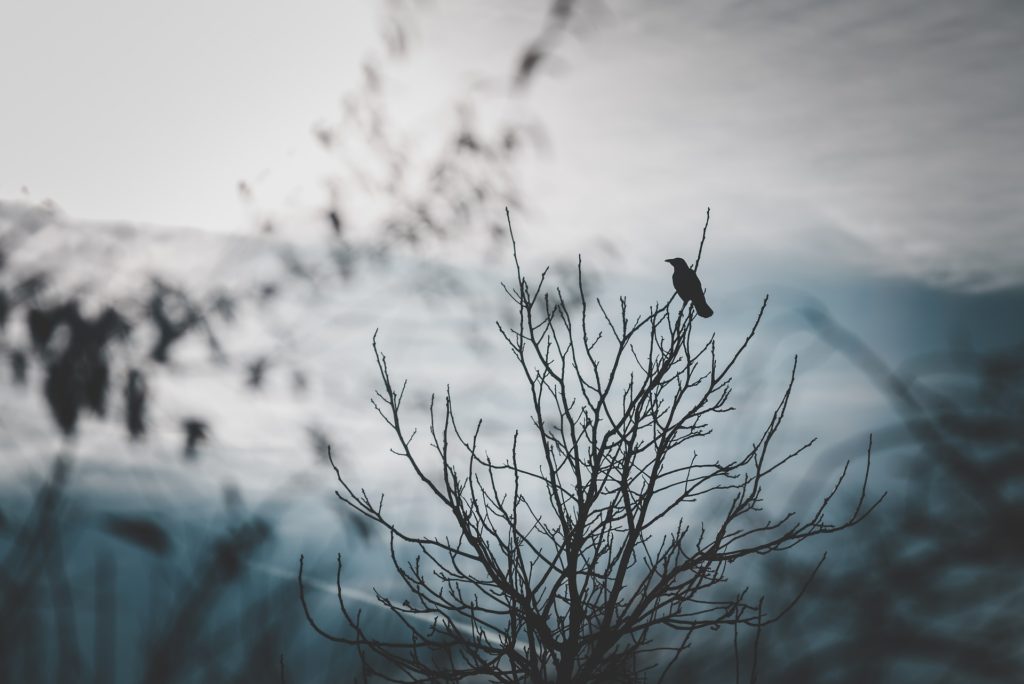Welcome back to the series of blog posts where I have weird and pointless thoughts about horror, sci-fi, and dystopia in opera, or the lack thereof. Last time, I discussed the highly-debated genre of science fiction, as well as its history. Now, it’s time to delve into the next part of the series title:
The History of Horror
Contrary to the cloudiness surrounding sci-fi’s origins, horror has been around since the creation of stories. There is always horror to be found in folklore or religious texts, and horror finds its way into much of literature as well. Since “horror” is just any fiction designed to make you feel horrified, the genre has many subtypes. A lot of works feature supernatural horror, with unfathomable monsters such as zombies, werewolves, or demons. Other works experiment with psychological horror, which tends to expose the darkest sides of existing humanity. This is why much of psychological horror features serial killers, though “serial killer horror” could be considered its own subgenre, depending on who you ask.
What I want to focus on, though, is the rise of a subgenre called gothic horror. This subgenre is also called gothic fiction or gothic literature, which tells you just how important the horror part of it is to the genre (it’s not). Gothic horror almost always has elements of standard horror in it, but overall, the genre is more about a particular aesthetic. There’s always a grand fight between humanity and evil, set against a bleak landscape that usually features Gothic architecture. Other common tropes of gothic horror include melodrama, the supernatural, damsels in distress, romance, the sheer forces of nature, and more. If gothic horror were a dance, it would require luscious costumes and huge, sweeping gestures.
 Pop quiz: which European artistic movement prioritizes the tropes I’ve outlined above? If you guessed the Romantic Era, which began in the later part of the 18th century, you’re right—in fact, gothic fiction was literature’s contribution to said movement. Scholars typically point to Horace Wadpole’s The Castle of Otranto, published in 1764, as the first novel in the genre. From there, the genre experienced a boom in the 19th century, starring Mary Shelley’s Frankenstein in 1818. Look at that—Frankenstein is important to gothic horror AND sci-fi.
Pop quiz: which European artistic movement prioritizes the tropes I’ve outlined above? If you guessed the Romantic Era, which began in the later part of the 18th century, you’re right—in fact, gothic fiction was literature’s contribution to said movement. Scholars typically point to Horace Wadpole’s The Castle of Otranto, published in 1764, as the first novel in the genre. From there, the genre experienced a boom in the 19th century, starring Mary Shelley’s Frankenstein in 1818. Look at that—Frankenstein is important to gothic horror AND sci-fi.
But Mary Shelley was far from the only person writing gothic horror during the 19th century. In the same century, the world saw works by E. T. A. Hoffman and Edgar Allan Poe, along with gothic horror classics like Dracula by Bram Stoker and Strange Case of Dr. Jekyll and Mr. Hyde by Robert Louis Stevenson. And even though the 19th century is considered the peak of gothic horror, the genre continues to infiltrate literature today. Stephen King is considered a modern gothic horror writer.
You may have noticed a growing overlap between gothic horror (and thereby horror fiction) and sci-fi. They experienced a boom at around the same time, and many novels are categorized under both genres. Mary Shelley’s Frankenstein, H. G. Wells’ The Invisible Man—even Jekyll and Hyde is considered a horror/sci-fi to some. The poor people who have to categorize these confusing, multi-genre novels and put them on shelves in bookstores really aren’t paid enough.
But that aside, I can now delve into my title’s final literary genre…
Regarding Dystopia

The term “dystopia” has existed since 1516, when Sir Thomas More coined it as an antonym to his perfect society, “utopia.” But dystopian fiction isn’t the opposite of utopian fiction. Dystopian fiction depicts an undesirable, imperfect society, but the characters within said fiction don’t always see it that way. In Aldous Huxley’s Brave New World, everyone thinks of their society as some kind of utopia, even though it’s clearly not to the protagonist and readers.
That said, the fact that dystopian and utopian fictions aren’t complete opposites doesn’t really matter. The point is, dystopian fiction portrays an imperfect society that is not our own. It’s a “What If?” genre. What if governmental censoring got out of hand? What if everyone was literally forced to be equal?
Dystopian fiction parallels sci-fi in this “What If?” regard, and indeed, the genre didn’t take off until the 20th century, after sci-fi had become popular. George Orwell’s 1984, Ray Bradbury’s Fahrenheit 451, and Anthony Burgess’ A Clockwork Orange were all published during the 1900s, and all of them also feature sci-fi to some degree. Like sci-fi, dystopian fiction also pairs well with satire; Brave New World is a good example of this. But thanks to more recent, young-adult bestsellers like The Hunger Games, we now predominantly associate dystopia with gritty horror.
H. P. Lovecraft once said: “The oldest and strongest emotion of mankind is fear, and the oldest and strongest kind of fear is fear of the unknown.” He was talking about horror fiction, but he inadvertently explains why horror complements sci-fi and dystopia so well. After all, “What If?” genres are all about the unknown.
Still, it’s important to remember that these genres can exist exclusive from one another. Horror can involve the supernatural, which forces it to exclude sci-fi. Sci-fi can depict utopian societies, like those you see in Star Trek. Dystopian fiction without sci-fi is hard to find, but at least Margaret Atwood’s The Handmaid’s Tale exists.
There’s more to ramble about, but I think that’s a good stopping point. Next time, I’ll finally explore why I think these genres might not appear in opera…


This Post Has 3 Comments
Thanks for your blog, nice to read. Do not stop.
Definitely believe that which you stated. Your favorite justification seemed to be on the web the simplest thing to be aware of. I say to you, I definitely get irked while people think about worries that they just don’t know about. You managed to hit the nail upon the top as well as defined out the whole thing without having side-effects , people could take a signal. Will likely be back to get more. Thanks
Hello, I think your blog might be having browser compatibility issues. When I look at your blog in Firefox, it looks fine but when opening in Internet Explorer, it has some overlapping. I just wanted to give you a quick heads up! Other then that, amazing blog!